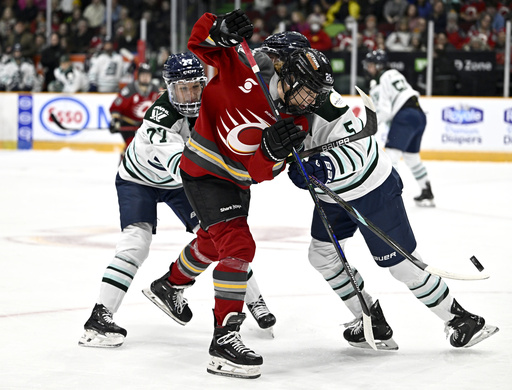
Boston Fleet defender Megan Keller chuckled knowingly when she recounted the incident involving an illegal check delivered by Catherine Dubois, which occurred just a month into the second season of the PWHL. The 28-year-old, who has experienced her fair share of hits on the ice, recognized that her own positioning contributed to the collision.
Reflecting on the moment, Keller recalled how she was at the tail end of a long shift and reached for the puck when the Montreal forward managed to get ahead of her and delivered a shoulder to her head. “That moment brought me back to reality,” Keller remarked. She admitted, “I could have been smarter and prevented that situation. Fortunately, I came away unscathed.” She emphasized the importance of learning from these experiences and being ready to adapt in the future.
Keller was unharmed in the incident, while Dubois faced a one-game suspension as part of the PWHL’s disciplinary actions, which have included a total of four suspensions and two fines so far this season. This number includes a two-game suspension handed out to Minnesota’s Maggie Flaherty, compared to just three suspensions and two fines issued during the league’s inaugural season.
Body checking is increasingly becoming a feature in women’s professional hockey, a notable shift from a time when it was prohibited. The inclusion of body checking was largely driven by player demand when the PWHL was established 18 months ago.
“The evolution of female athletes playing the sport has led to a desire for a more physical game,” said Jayna Hefford, executive vice president of hockey operations for the PWHL. “Understanding and accepting contact is part of the game they want to embrace, particularly given the size and speed of the players.”
The challenge now lies in helping players adapt safely to this new physical style, especially since hitting has not been a norm at younger levels of the game. Coach Ken Klee of Minnesota, who has a background in the NHL, mentioned that it’s crucial for players to take responsibility for their safety and not solely rely on referees for protection.
As the PWHL enters its second season, it has implemented two key measures to address checking rules. Hitting is permitted only when both players are in motion in the same direction, while open ice hits and checks on players whose backs are turned remain prohibited.
Additionally, former NHL star Ryan Getzlaf conducted a session with the players to discuss safe hitting techniques and strategies to avoid injuries during checks. He showcased legal and illegal hits from both NHL and PWHL footage, highlighting the importance of body positioning and awareness ahead of potential checks. Getzlaf expressed feeling a bit anxious about instructing elite players he respects and sees as peers.
“They’re bigger, stronger, and faster than ever, and I believe that influenced my approach,” Getzlaf said. “They want to ensure that their game reflects the hard work they put in.”
U.S. and Canadian national team athletes have more experience with hitting, especially since the IIHF has allowed increased physical play during their clashes. This was evident during the recent world championships held in Utica, New York, where a more aggressive style was visible during the gold medal game.
The growing emphasis on physicality has been reinforced by the IIHF aligning with PWHL officials to define checking rules, aiming to set a new precedent for women’s hockey ahead of the 2026 Winter Games. Sweden’s professional women’s league had already integrated hitting in the past two years.
Despite being on the shorter side at 5-foot-4, Toronto’s Emma Maltais is known for her tough playing style, having honed it in boys’ leagues and continued it during her time at Ohio State, where checking rules are more lenient. Notably, she has maintained a clean record with only three minor penalties while accumulating a league-leading 32 hits so far this season.
“I’m not sure if it’s my smaller size that plays a role, but having a lower center of gravity helps when executing hits,” Maltais shared. “There’s something exhilarating about hitting; the impact lingers not just in that moment but affects players for future confrontations.”
PWHL officials hope that incorporating hitting into levels prior to college will facilitate a smoother transition for young female players. “It’s pivotal that we commence education on this element of the game earlier,” remarked New York Sirens coach Greg Fargo, drawing from his extensive coaching experience at Colgate. “Witnessing the PWHL become a physically intense league was a fascinating experience as a spectator.”
Fargo acknowledged the significance of hitting at the PWHL level. “Physical play is not merely about making contact; it creates opportunities for offensive strategies,” he noted. “As we approach the latter part of the season and the playoffs, I anticipate that the level of physicality will continue to increase.”

